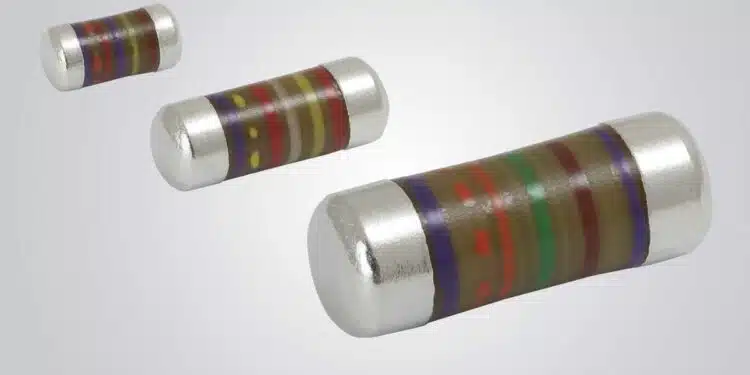Vishay released MMA 0204 and MMB 0207 AEC-Q200 qualified thin film MELF resistors that can replace multiple lower-value resistors used in series with a single device to save space, simplify designs, and lower costs.
Vishay Intertechnology, introduced an enhanced resistance range for precision versions of its AEC-Q200 qualified thin film MELF resistors in the 0102, 0204, and 0207 case sizes.
Designed to meet the needs of applications with high stability and reliability requirements, the Vishay Beyschlag MMU 0102, MMA 0204, and MMB 0207 are now available with low TCR down to ± 15 ppm/K, tight tolerances down to ± 0.1 %, and high resistance values of up to 10 Mohms.
Compared to previous thin film MELF resistor offerings, the devices released today provide significantly higher resistance. For example, for a device in the 0204 case size with a TCR of ± 25 ppm/K and a tolerance of 0.1 %, resistance had previously been limited to 511 kW.
The precision MMA 0204, however, now offers 10 times higher resistance of 5.11 MW at the same TCR and tolerance, and 1 MW at an even lower TCR of ± 15 ppm/K. With their high resistance, a single MMA 0204 or MMB 0207 resistor can replace multiple lower-value devices used in series, which not only saves spaces, but simplifies designs and lowers overall costs.
Built on an advanced metal film technology, the precision resistors provide proven reliability for current sensing in power supplies for automotive ADAS, LIDAR, connectivity, and camera systems, in addition to telecom, industrial, and medical equipment. For these applications, the devices feature a robust design, intrinsic sulfur resistance, and excellent overall stability that exceeds stability class 0.05. Suitable for processing on automatic SMD assembly systems, the lead (Pb)-free resistors are RoHS-compliant, halogen-free
FEATURES
- IECQ-CECC approved according to EN 140401-803
- AEC-Q200 qualified
- Advanced metal film technology
- Superior stability: class 0.05
- Intrinsic sulfur resistance
APPLICATIONS
- Automotive
- Telecommunication
- Industrial
- Medical equipment
































